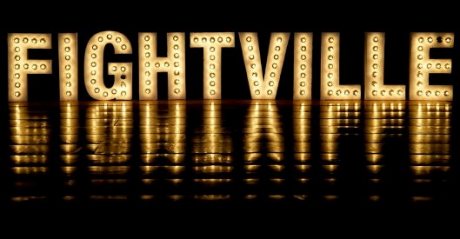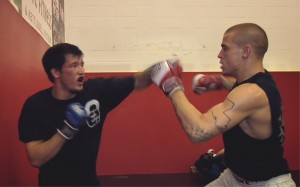EIFF REVIEW: Fightville captures humanity behind mixed martial arts
 There’s a moment early on in the documentary Fightville that elegantly summarises a key theme: that success demands discipline, while life demands honesty.
There’s a moment early on in the documentary Fightville that elegantly summarises a key theme: that success demands discipline, while life demands honesty.
Young Albert Stainback is explaining his motivation for wanting to be a pro fighter. It’s about his difficult life, his father’s murder, the abuse his mother suffered. He’s a smart, perceptive young man. Albert is fighting from a place of anger and frustration.
 And in the modern world of Mixed Martial Arts, where any bout can be bloody in outcome but utterly bloodless in the cold, technical precision with which it ends, that means Albert has no future. Anyone thinking about why they’re in the ring has not been moulded to survive.
And in the modern world of Mixed Martial Arts, where any bout can be bloody in outcome but utterly bloodless in the cold, technical precision with which it ends, that means Albert has no future. Anyone thinking about why they’re in the ring has not been moulded to survive.
It’s a harsh reality that plays out in relatively gentle fashion across the length of this visually sumptuous feature documentary, which screened at the Garneau Theatre as part of the Edmonton International Film Festival.
Documentarians Petra Epperlein and Michael Tucker caught lightning in a bottle by deciding to track a small southern MMA regional “loop,” running into an ex-pro and two up-and-comers deep and charismatic enough to carry the film.
The result is broader than a movie about fighting. It’s a life lesson, an abject look at the challenges some people face to survive and succeed, and an exploration of physial combat as a craft.
Albert learns the hard way that without total commitment, some disciplines simply will not allow success – particularly those at which physical injury is an ever-present possibility.
Fightville so thoroughly explores the psyches of participants that, to those who previously just saw Stainback’s chosen sport as thuggery, MMA becomes something of a revelation, a technically demanding style of fighting that takes the most effective elements of several other disciplines. In this sport, traditional martial artists are eaten for breakfast, brutally shut down with pragmatic wrestling arm bars, jiu jitsu finger locks and judo choke outs. Every guy competing already has belts from other disciplines.
One disturbing scene –there’s actually relatively little blood in the film– shows a fighter having the bones in his face essentially broken, only for his amiable promoter to complain that an ambulance is overkill. The same showman promotes the sport as a family event, suitable for pre-teen children, which given how impressionable young kids are is absolutely nuts. Though as proponents point out, there are several elements of the sport that make it safer than boxing and lower the risk of serious injury, it is dangerous, and it does glorify humanity’s combative nature.
And in that respect, Albert’s opposite number is quite evidently the real deal.
Dustin Poirier has been a fighter all through his young life; his dad was a fighter. He says early that he doesn’t do it because he enjoys hurting people; he just loves to win fights. It’s what he was born to do. When one enemy underestimates him and promises to take him out in under a minute, Poirier turns the tables on him in such a clinical style, you truly have a hard time seeing him ever losing. He’s adrenaline and precision in equal doses and goes by the moniker “The Diamond”, not for reasons of fancy dress, but merely because there is nothing harder.
When he’s not in the ring he’s at the gym. Though he’s intelligent enough to qualify and discuss the role of force in society, he doesn’t have a softer, intellectual side intruding constantly, and if he does, he’s already decided that, along with any other luxuries, it’s going to be shelved until he’s world champion. He’s a fighting machine, a winning machine.
I won’t spoil the outcome of the film, except to say that a cursory check on both men’s fighting records since the documentary was filmed show the elemental lessons in it hold true over time. Whether Fightville’s intent was to bring respect to the sport or not – derided as it continues to be by many – there’s no doubt it accomplishes just that. I admit to having been repulsed by the sport before watching it, and a lot more understanding of it afterward. It illuminates the spiritual side of true warriors, a select group of men who spend weekends locked in battle, fighting to survive, and smashing each other’s faces in.











